New on Sports Illustrated: The Best of Men's International and Club Soccer in the 2010s
Who ran the 2010s in the club and international game? We look back on the decade with a series of superlatives.
The 2010s were loaded with international competitions, outlandish transfer fees and a rise of the superclubs across Europe, and as the decade comes to a close, it's time to look back and filter out the best of the best in the men's game.
There were three World Cups, all won by European nations (Spain, Germany, France), with the Germans breaking through for the continent on South American soil. There were two European championships, with Spain cementing its international domination with a third straight major title in 2012 and Portugal breaking through for its first major European title in 2016 in an expanded event.
In South America, there were four Copa America competitions–with another slated for 2020–as CONMEBOL tweaks its formula to get it on the same schedule as the Euros. Chile's first two major trophies were sandwiched by victories in 2011 by Uruguay and 2019 by Brazil.
The six Africa Cup of Nations since 2010 yielded six different winners, while the USA (two titles) and Mexico (three) continued to dominate Concacaf's Gold Cup. In Asia, Japan was joined by first-time Asian Cup winners Australia and Qatar, and Tahiti managed to break up the Australia (before it switched federations) and New Zealand Oceania duopoly before the All Whites restored their dominance in 2016.
On the club level, Lionel Messi and Cristiano Ronaldo continued to upstage each other, while Real Madrid's four Champions League titles in five years set a new modern standard. Its fellow superclubs (
save for one remarkable season by Leicester City) consolidated the domestic-trophy-winning power across the continent, setting the stage for what could be drastic maneuvers that change the club game's structure forever in the decade that follows.But before turning the page to the 2020s, let's look back one last time at a series of superlatives for the last 10 years:
Greatest international title team
Zambia, 2012 African champions

What does “greatest” mean? If it means highest quality, then the Spain side that won the Euros in 2012 and by doing so claimed a third major international trophy in a row probably takes the crown. But if football were just about who has best worked out the way of putting the ball in the net, it would not be the global phenomenon it is now. It is also about courage and romance and what it means to be human.
In 1993, the Zambia national team, en route to a World Cup qualifier in Senegal, stopped in Libreville, Gabon, to refuel. Shortly after takeoff, the plane exploded over the Atlantic and went down, killing all on board. Only one regular from that side survived, the great forward Kalusha Bwalya, who was playing for PSV Eindhoven and making his own way to the game from the Netherlands. By 2012, he had become president of the Zambian FA.
Zambia was an outsider for the African Cup of Nations in 2012. It was drawn in the half of the tournament in Equatorial Guinea. It was only after the quarterfinal that people began to realize that if Zambia beat Ghana in the semifinal, it would play the final in Libreville, the first time it had returned since the crash. It did beat Ghana. On the running track by the side of the pitch, Bwalya, voice hoarse with emotion, spoke to journalists. In the final, he said, the Ivory Coast would be facing not just 11 players, but 11 ghosts.
The day before the final, Zambia’s players visited the beach that represented the last point of land the plane had crossed. In team tracksuits they began softly singing a national song and walked out into the surf to lay bouquets on the ocean. The following night, having held the Ivory Coast to a goalless draw, they stood in the center circle at the Stade l’Amitie and sang the same song throughout an epic shootout that stretched to 22 penalties. When Kolo Touré missed, Rainford Kalaba had the chance to win it. He missed. But then so did Gervinho. Stophira Sunzu converted, Zambia had its first Cup of Nations and a stadium was left in tears.
Greatest club season
Barcelona 2010-2011

Pep Guardiola’s Barcelona wasn’t just a great team–perhaps the greatest team–it was also a team that changed the parameters of what was considered possible in football. Defeat to Real Madrid in the Copa del Rey final may have denied it a clean sweep of trophies, but 2010-11 was still probably its greatest season, in part because of the rivalry with Jose Mourinho’s Real Madrid, but more for the sumptuousness of the football it produced on a regular basis. The 3-1 victory over Manchester United in the Champions League final at Wembley Stadium was mesmerizing, a philosophy made flesh and enlivened by the brilliance of Lionel Messi.
Greatest club player
Lionel Messi
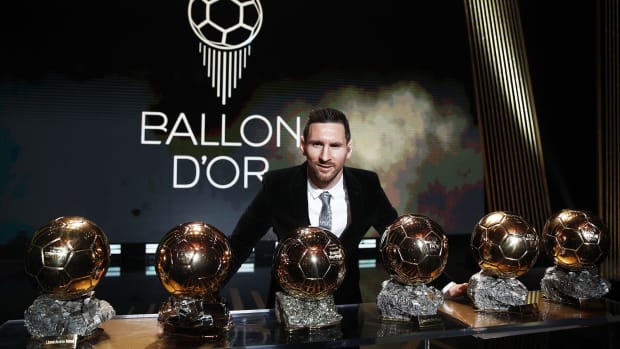
The ongoing debate about the respective merits of Messi and Cristiano Ronaldo is one of the more tedious aspects of football in the decade. Both are brilliant, but Messi is less flashy and more team-oriented, somebody who is instinctively a minimalist and yet still seems to score a goal of devastating brilliance every week. Ronaldo’s ego and his reluctance to track, cost Real Madrid in a couple of key games and is one of the reasons he won only two league titles in nine years at Madrid.
Best club dynasty
Real Madrid (four Champions League titles in five years, 2014-18)

Club dynasties in domestic leagues tend to be a terrible thing for football. Nobody, not even fans of those clubs, should look at the way Juventus, Paris Saint-Germain and Bayern Munich have reeled off title after title and see anything other than the dispiriting financial inequality that has effectively destroyed those leagues as competitive entities. Spain is little better. This is the result of greed and a failure on the part of the big clubs to recognize that the greater the disparity between them and their rivals the less their victories matter–something best seen in the way Juventus parted company with Max Allegri after five league titles in a row.
Madrid’s success in the Champions League, of course, is born of the same source, but at least there it is competing with other superclubs. Perhaps it rode its luck at times, and the fact Madrid won only one league title in that spell prevents it from being considered a truly great club side, but still, ending 27 years without a repeat winner in the Champions League by winning three in a row is some achievement. Madrid effectively gathered a host of high-class players and won the moments in big games; it’s not a recipe for sustained success over a league season, but it brought the sort of domination of Europe that hadn’t existed since the 1970s.
Honorable mention should go also to River Plate, which, recovering from its first relegation in 2011, reached three Copa Libertadores finals under Marcelo Gallardo between 2015 and 2019, winning two of them.
Best transfer signing
N'Golo Kante (Caen to Leicester City, $7.3M, 2015)
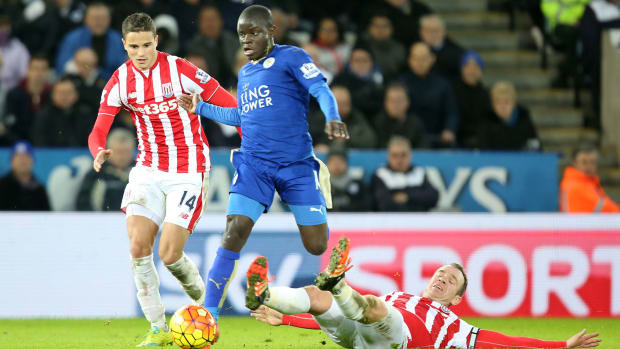
In a world where money seems to dominate everything–when very ordinary players move for more than $50 million–there is something consoling that a player who moves for so little and with almost no hype can have such an impact. Kante was the key figure as Leicester won its implausible 2015-16 title, and the following season, having moved to Chelsea for $42 million, he won the league again.
Best club match
Liverpool 4, Barcelona 0 (2019 Champions League semifinal second leg)
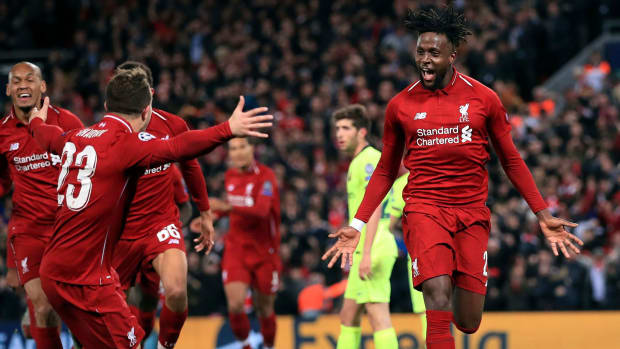
The end of last season was characterized by a series of remarkable comebacks in the Champions League, and almost any of them could be chosen. There were Tottenham’s wins over Manchester City and Ajax, following years that included Barcelona’s fightback from a 4-0 first leg defeat to beat Paris Saint-Germain and Barcelona’s defeat away to Roma. But the one that stands out, for unexpectedness, for the stage of the competition, for the fact it didn’t require away goals, and for the sheer quality of the performance and the thrill of the night, was Liverpool beating Barcelona to overturn a 3-0 first-leg deficit. That the goals came from the unexpected sources of Gini Wijnaldum and Divock Origi only made it more remarkable.
Best international match
Germany beats Brazil 7-1 (2014 World Cup semifinal)
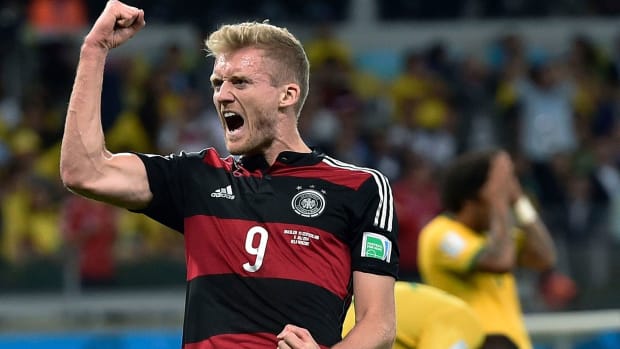
There were tighter and more dramatic games, of course–Belgium’s 2-1 victory over Brazil in the 2018 World Cup quarterfinal, France’s 4-3 win over Argentina at the same tournament, or Mali’s comeback to draw 4-4 with Angola in the 2010 Africa Cup of Nations–but in a decade in which international football has slipped further behind the club game in terms of quality, the one match you can guarantee everybody will still talk about in 30 or 40 years came in the semifinal of the 2014 World Cup, and Brazil’s collapse against Germany on home soil.
Best club XI and manager
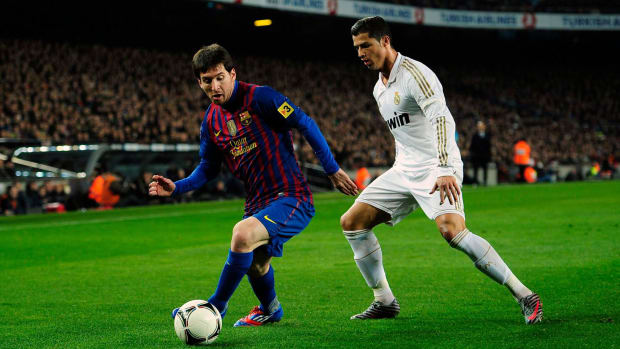
GK: Victor Valdes; D: Dani Alves, Gerard Pique, Sergio Ramos, Marcelo; MF: Xavi, Sergio Busquets, Luka Modric; F: Lionel Messi, Robert Lewandowski, Cristiano Ronaldo
Coach: Pep Guardiola
It’s a side based largely on the great Barcelona of the early part of the decade and the Real Madrid side that subsequently won four Champions League titles in five years, with the addition of Robert Lewandowski, a splendidly complete center forward for both Borussia Dortmund and Bayern Munich. Andres Iniesta and Jordi Alba perhaps could have been included ahead of Modric and Marcelo, but other than that, given how the two sides dominated European football over the decade, this was a relatively straightforward team to pick. Equally, Guardiola, with seven league titles in three countries and a Champions League in the decade, and having inspired a tactical revolution, was a fairly obvious pick as coach.
Best international XI and manager
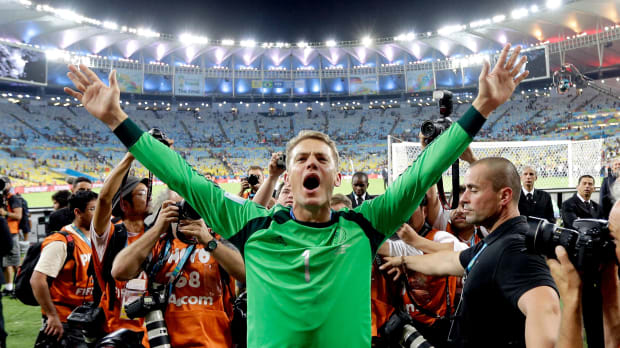
GK: Manuel Neuer; D: Philipp Lahm, Gerard Pique, Sergio Ramos, Jordi Alba; MF: Xavi, N’Golo Kante, Toni Kroos; F: Lionel Messi, Cristiano Ronaldo, Alexis Sanchez
Coach: Oscar Tabarez
Spain’s 2010 World Cup- and Euro 2012-winners and Germany’s 2014 World Cup-winners provide the basis of the side, even if that Germany, beaten in the semifinal of the 2010 World Cup and the 2012 Euros, never seemed quite to live up to expectations.
Kante, the best holding midfielder in the world for the second half of the decade, earns his place on the basis of his performances at the 2018 World Cup, and Cristiano Ronaldo plays at center forward, where he has looked at his best for Portugal, winners of the 2016 Euros and the 2019 UEFA Nations League.
Messi, for all of Argentina’s underachievement, still takes his place on the left: he is the best player in the world and has inspired an otherwise sluggish Argentina to the finals of the World Cup and two Copa América tournaments. Alexis Sanchez operates on the right having been the key figure as Chile won the first two trophies in its history.
Selecting the coach was more difficult. There are good cases to be made for Vicente Del Bosque (a World Cup and a European Championship, even if he was building on foundations that had already been laid for him), Herve Renard (Cups if Nations with Zambia and Cote d’Ivoire, the only manager ever to lift the trophy with two different countries), Jorge Sampaoli (leading Chile to its first Copa América), Fernando Santos (leading Portugal to its first ever Euros and the Nations League) and Ricardo Gareca (making Peru a force to be reckoned with again), but the decision went in the end to Tabarez, who not only won the Copa America with Uruguay and led it to a World Cup semifinal but entirely revamped the youth development structure of his nation, redefining the self-image of the Uruguayan game and, as far as is possible, ensuring a steady supply of talent for years to come.
Comments
Post a Comment